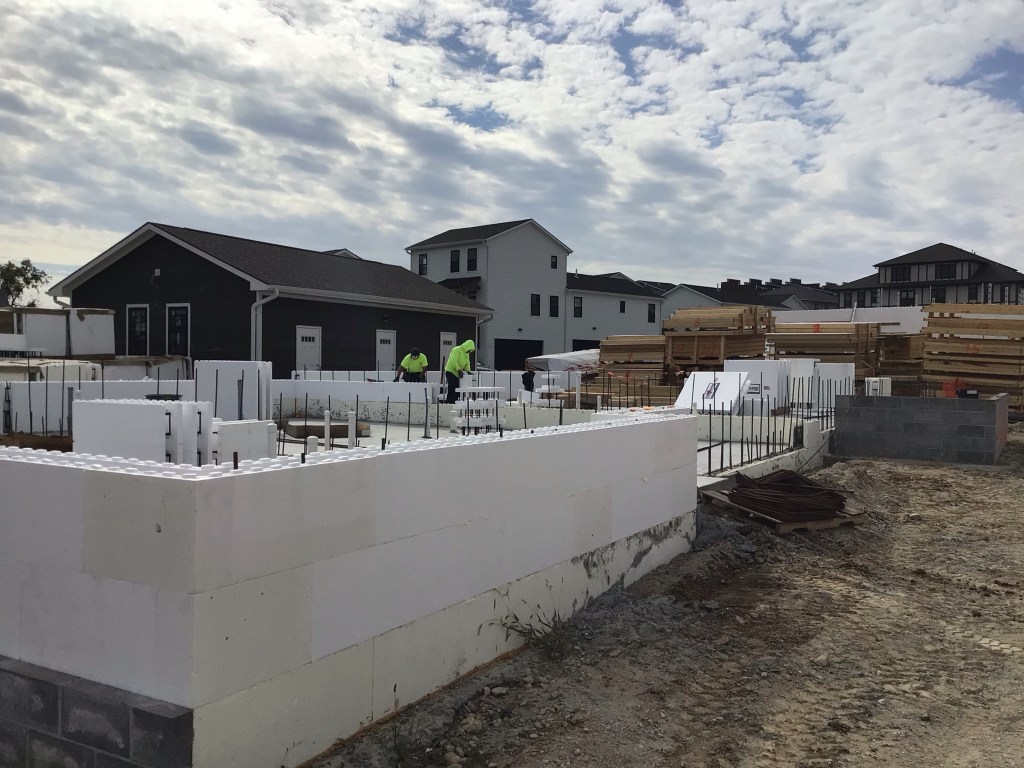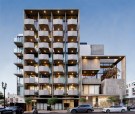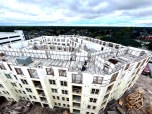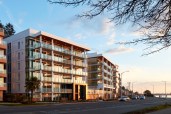Much has been written and discussed about missing middle housing types. Many reasons are cited for the disappearance of duplex, triplex, fourplex, cottage, live-work, bungalow, and other once-common housing types.
For Omaha, Nebraska-based multifamily owner, developer, and property manager Jerry Reimer, that slow fade is a pity.
“I love the missing middle,” Reimer says, principal of Urban Waters and several other development companies. “I asked myself, ‘How could I blend a garden-style apartment with the walkability charm of the missing middle?’”
That answer is a 650-unit master-planned community called Bungalows on the Lake, winner of the NAHB 2020 Best in American Living Award. The first phase of the project is nearing completion in suburban Omaha.
Missing Middle Reborn
“The parking lots are designed like streets. The buildings look like single-family homes. There are no common hallways. Every unit has an exterior door. There are no stacked bedrooms. We use attic space to achieve more density and rentable space. We compete well financially and managerially,” Reimer reports.
The walkable community vibe is so strong, visitors often ask, “Where are the apartments?” The question delights Reimer. It’s the perfect realization of the missing middle spirit.
Competing Processes
Supply chain issues have challenged the project, notably wide swings in wood price and supply. To hedge his bets, Reimer is putting an alternative construction method to the test. It’s insulating concrete forms (ICF), new to Reimer and his project team. ICF is a wall system formed by stacking foam-framed blocks Lego-like to create a cast-in-place concrete wall. The resulting envelope offers extreme resiliency, energy savings, acoustic control, and a potential benefit especially intriguing to Reimer: cost.
“I’ve done wood. I’m doing wood. I’m not giving up on wood. But I have to keep myself honest, especially in such a high-price market,” the developer explains.
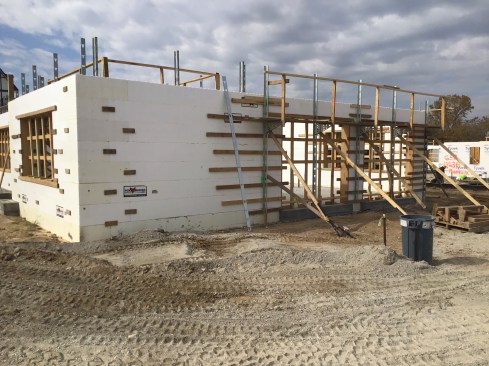
ICF vs. Wood
That honesty has taken an interesting turn. To ensure a strict apples-to-apples comparison, Reimer is conducting a bake-off between stick-built and ICF. Eighty ICF units are designed identical to stick-built units. “We are actively piloting a side-by-side test,” Reimer says. “We’re looking at the total cost of construction.” The ICF units are now in construction.
His early read? First-in costs are highly similar. Among the factors:
- Insurance. His builder’s risk insurance premium on a concurrent project is $30,000 for ICF versus $90,000 for wood.
- Material and Labor Availability. Contractor bandwidth is limited, especially for wood framers. Spreading construction across two approaches keeps the project moving forward. “I’m not hooking my wagon to one methodology,” Reimer says.
- Contractor Competition. “The carpenters want to show the ICF crews they’re faster. The ICF guys want to show up the wood guys. It’s a win-win for the project,” he says.
- Tax Incentives. “We’re eligible for an energy-efficiency tax credit and an even larger one if the infrastructure bill passes Congress,” he notes.
Reimer wants Bungalows on the Lake to be a teaching moment for multifamily professionals. “I’m open to scrutiny. I want to be challenged and questioned. I want to learn as much as I can.”
Learn more about how ICF offers multifamily owners and operators a proven construction alternative.
